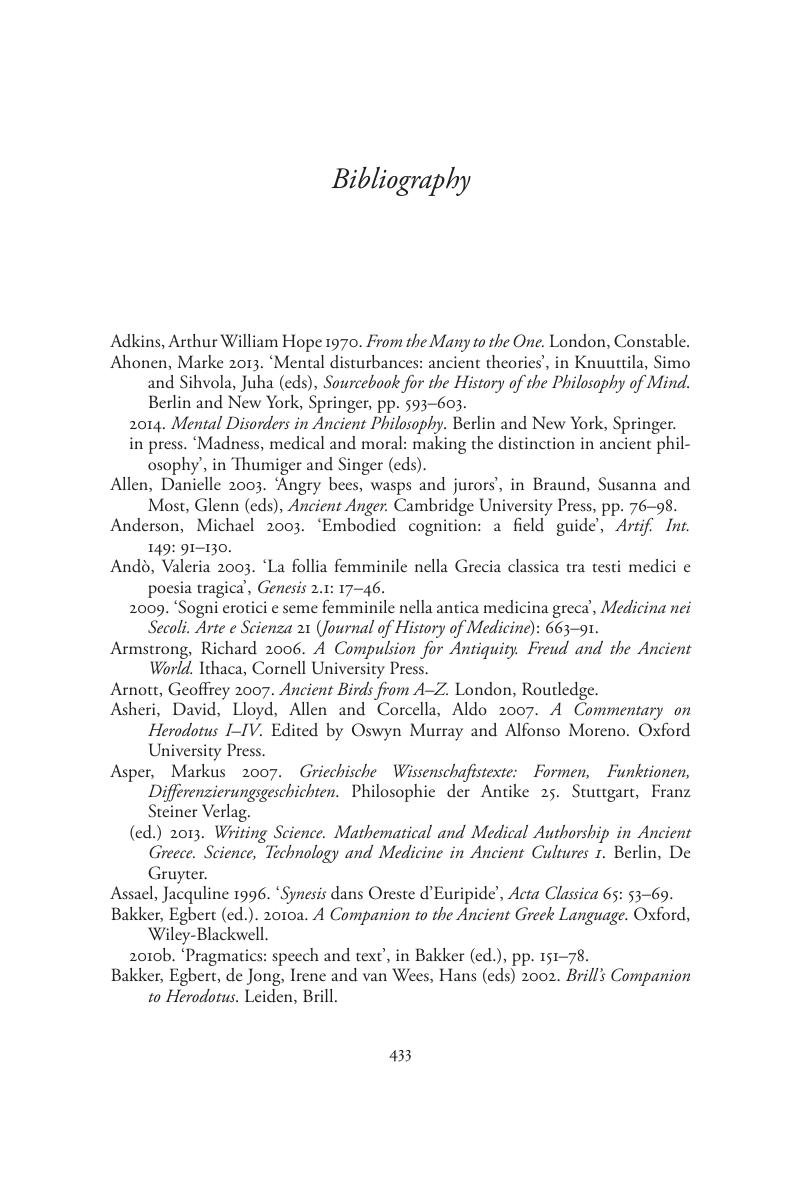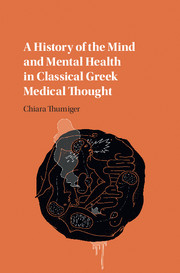Book contents
- A History of the Mind and Mental Health in Classical Greek Medical Thought
- A History of the Mind and Mental Health in Classical Greek Medical Thought
- Copyright page
- Contents
- Acknowledgements
- Introduction
- 1 Mental Disorder and History
- Part I The Body of the Insane
- Part II The Mind of the Insane
- Conclusions
- Appendix: Dates and Dating
- Texts and Translations Used
- Bibliography
- Index Rerum
- Index Locorum
- Index of Greek Words
- References
Bibliography
Published online by Cambridge University Press: 29 June 2017
- A History of the Mind and Mental Health in Classical Greek Medical Thought
- A History of the Mind and Mental Health in Classical Greek Medical Thought
- Copyright page
- Contents
- Acknowledgements
- Introduction
- 1 Mental Disorder and History
- Part I The Body of the Insane
- Part II The Mind of the Insane
- Conclusions
- Appendix: Dates and Dating
- Texts and Translations Used
- Bibliography
- Index Rerum
- Index Locorum
- Index of Greek Words
- References
Summary

- Type
- Chapter
- Information
- Publisher: Cambridge University PressPrint publication year: 2017



